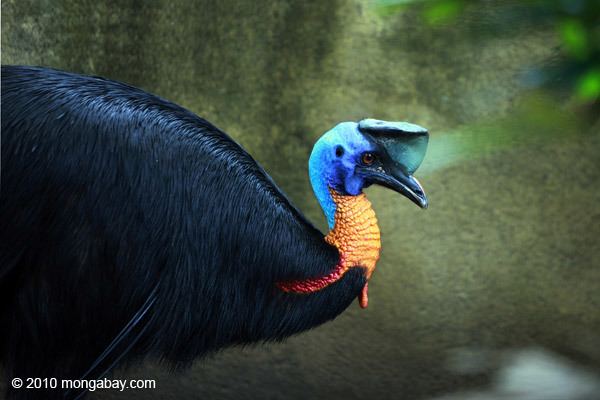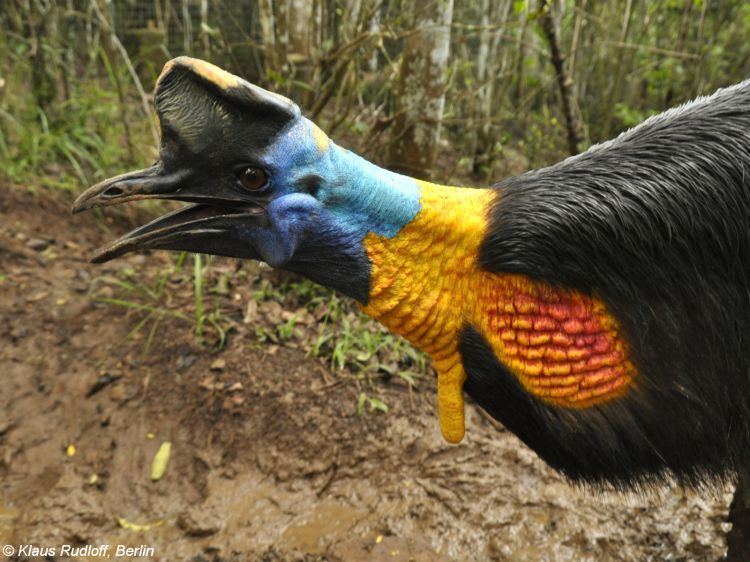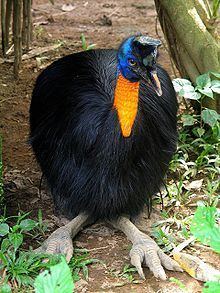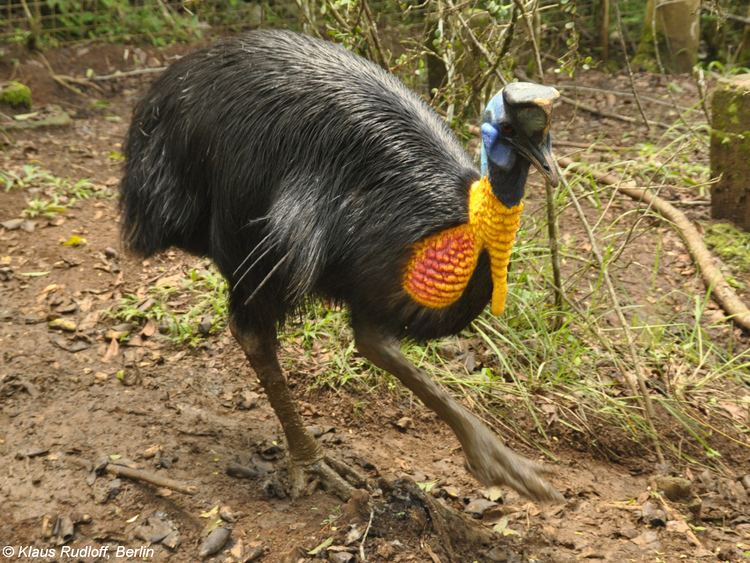Genus Casuarius Rank Species | Phylum Chordata Family Casuariidae Higher classification Cassowary | |
 | ||
Scientific name Casuarius unappendiculatus Similar Cassowary, Dwarf cassowary, Bird, Southern cassowary, Casuariiformes | ||
The northern cassowary (Casuarius unappendiculatus) also known as the single (one)-wattled cassowary or gold(en)-neck(ed) cassowary, is a large, stocky flightless bird of northern New Guinea. They are members of the superorder Paleognathae. (See also dwarf cassowary and southern cassowary.)
Contents

Taxonomy

Edward Blyth first identified the northern cassowary from a specimen from an aviary located in Calcutta, India, in 1860. The genus name Casuarius is derived from the Malay word kesuari "cassowary", while the species name unappendiculatus refers to the species' single wattle. Officially, there are no subspecies, though some authors list several subspecies.
Description

It has hard and stiff black plumage, blue facial skin and a casque on top of the head. It has a bright red or yellow colored neck and wattle. The feet are huge and strong with long, dagger-like claw on its inner toe. The sexes are similar. The male, at 30 to 37 kg (66 to 82 lb), is smaller than female, at an average of 58 kg (128 lb), making it the world's fourth heaviest living bird species after the common ostrich, Somali ostrich and the similarly-sized southern cassowary. These birds measure 149 cm (4.89 ft) long and stand 1.5–1.8 m (4.9–5.9 ft) in height. Compared to the southern cassowary, the northern cassowary has a slightly shorter bill, at 12 to 13.7 cm (4.7 to 5.4 in), but a slightly longer tarsal length, at 28 to 33.2 cm (11.0 to 13.1 in).
Phylogeny

Casuariidae is the family of the northern cassowary. There are only four members, three of which are Cassowaries; the other, the only remaining species of emu. All are similar. Emus were classified in a different family until it was decided that they are similar enough to the cassowaries that they could be classified in the same family. All four members of the Casuariidae are large flightless birds. The northern cassowary and the emu share homologous features. For example, both have a blue patch of colour on their face/neck, but the functions of these differ. The emu’s patch is of a paler colour and is used as a form of camouflage where it is located. The northern cassowary’s patch of blue is brighter, and is used for attracting mates.
Range and habitat

The northern cassowary is distributed and endemic to coastal swamp and lowland rainforests of northern New Guinea and the islands of Yapen, Batanta and Salawati. They prefer elevations below 490 m (1,610 ft).
Behaviour
As with other cassowaries, it is a shy and solitary bird. Their diet consists mainly of fruits and small animals. They make grunting and hissing sounds, like other cassowaries.
In breeding season, the polygamous female lays three to five green eggs on a well camouflaged nest prepared by male, she leaves the nest and eggs to find another mate. The male raises the chicks alone for about nine months.
Conservation
Due to ongoing habitat lost and overhunting in some areas, the Northern Cassowary is evaluated as Vulnerable on the IUCN Red List of Threatened Species, with hunting being the biggest threat. Native people use the bones and eggs, and take the chicks to be raised for meat. As logging opens up more areas of the forest, hunting will be more of a problem. Their occurrence range is 186,000 km2 (72,000 sq mi) and a 2000 estimate placed their numbers at 9300.
